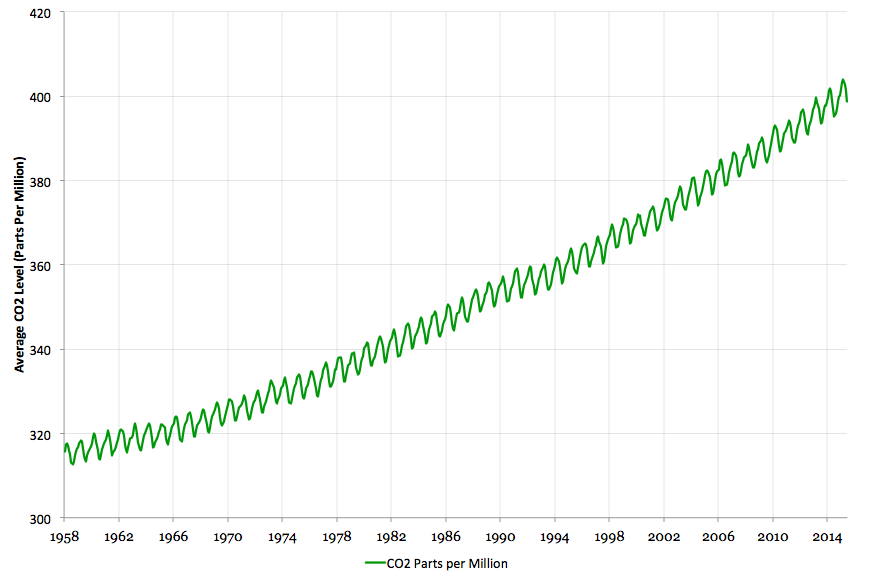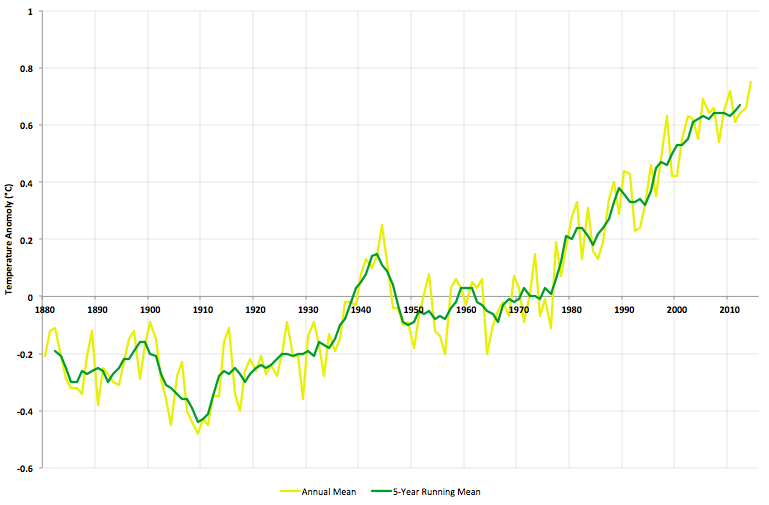“No challenge poses a greater threat to future generations than climate change.”
President Barack Obama, State of the Union Address (2015).
Each year the shift in our climate, caused partly by the plundering of the world’s natural resources, leads to the loss of 46,000 square miles of forests, 12 million hectares of arable land and 10,000 species.
There is a clear-cut consensus, reaffirmed by extensive research conducted globally, that the burning of fossil fuels and the subsequent production of greenhouse gases (GHGs) is one of the main factors behind the earth’s warming temperatures, more commonly described as climate change.
More than half a trillion tons of carbon, from coal, oil and gas, have been burned since the Industrial Revolution, and the level of CO2 in the atmosphere has risen by 40% in the past 250 years. Half of this increase has occurred during the last 50 years, and the Intergovernmental Panel on Climate Change (IPCC) has estimated another 500,000 tons of carbon will be consumed over the next three decades.
Global CO2 Emissions (1958-2014)
Source: NASA. Global Climate Change: Vital Signs of the Planet (2015)
The last time so much greenhouse gas was in the air was over 3 million years ago, when the arctic was ice-free, savannah spread across the Sahara dessert and sea levels were up to 40 meters higher than they are today. Global surface temperatures have risen by almost two degrees Fahrenheit over the last century, with the rate increasing by 0.3 to 0.8 degrees per decade since 1970. Sea levels have risen by 20cm within our lifetimes, an amount unmatched by any period in the past 6000 years, and the arctic summer sea ice is expected to disappear completely by 2100.
Even meeting the emission goals pledged by countries under the United Nations Framework Convention on Climate Change (UNFCCC) would still leave the world 13.7 billion tons of CO2 – or 60% – above the level needed to remain on track for a 2 degree warming by 2035.
Global Land-Ocean Temperature Index (1880-2014)
Source: NASA Goddard Institute for Space Studies. Surface Temperature Analysis (2015)
Climate change also increases the costs of development in the poorest countries of the world by up to 30%. For these regions, the annual cost of infrastructure that is resilient to climate change is around $1.2 trillion to $1.5 trillion, resulting in a yearly $700 billion gap in financing.
One of the more practical and achievable ways cleanse our environment and ensure an equitable future is to lock up or sequester more carbon from the atmosphere through the simple process of planting more trees worldwide. By utilizing available atmospheric CO2 in photosynthesis, trees provide a simple and effective natural ‘sink’ for manmade pollutant activities. In fact, forests across South America, Africa and Asia already absorb one-fifth of the planet’s fossil fuel emissions.
For those examining the benefits of plantations, neem trees tick many of the boxes for its suitability. A hardy, drought resistant tree, with a thick foliage, single trunk, very high leaf surface area and wide canopy, neem provides a good platform for maximum CO2 fixation. It has a high rate of photosynthesis and liberates more oxygen than many other tree species, being able to ‘fix’ more than 14 μmol of CO2 m-1 sec-1. The tree can also live for up to 200 years.
The urgent need for climate change mitigation is giving rise to an important new asset class. Planting trees offers one of the most efficient and least expensive climate change mitigation channels, and makes a compelling product for the growing market for sustainable solutions and investments.

